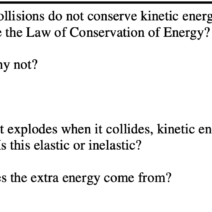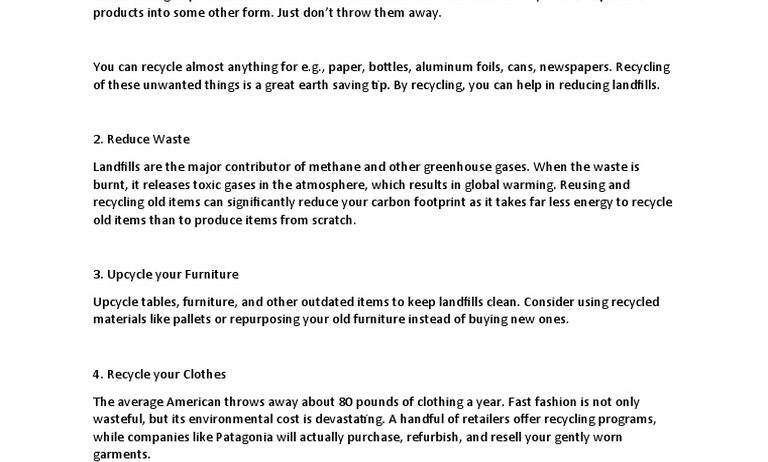In the grand tapestry of environmentalism, reducing, reusing, and recycling emerge as essential threads weaving through the narrative of sustainability. These three principles, often referred to as the “3Rs,” act as a potent antidote to the relentless advance of global warming. Understanding the intricate connection between these practices and their impact on our planet is akin to deciphering an elaborate symphony, where each note contributes to a harmonious existence.
The first note played in this symphonic endeavor is reduction. To reduce is to declutter, to lighten the load we impose on our planet. It is the act of consciously choosing less—the less we consume, the less waste we generate. Imagine a world where each individual awakens to the realization that their choices ripple through the fabric of nature. A reduction in manufacturing demands less energy consumption, leading to diminished carbon emissions that typically accompany production processes. It is the monumental shift from excess to prudence that can significantly arrest the rise of global temperatures.
Visualize a river, flowing gracefully toward an expansive ocean. Now envision pollutants piling along its banks—each one a manifestation of human excess. By reducing our consumption, we can mitigate the sediment of waste that chokes our natural waterways, allowing this river to flow clean and free once more. The clearer and purer the river, the healthier our ecosystems, and in turn, the more resilient our planet becomes in the face of climate change.
The second strand of our environmental ethos is reuse. This principle invites us to rethink our relationship with material goods. Instead of relegating items to the graveyard of landfills, we are encouraged to give them a second life. Each reused item is not merely an act of frugality; it is a stand against the prevailing notion of disposability that has become ingrained in modern culture.
Imagine a worn-out book, its pages dog-eared and its cover frayed. Rather than discarding it, consider passing it along to a friend or donating it to a local library. This simple act encapsulates the spirit of reuse—transforming what was once an object of consumption into a vehicle for shared knowledge and connection. By prolonging the lifecycle of materials, we stave off the need for new products, curtailing the environmental degradation associated with their production.
Moreover, every reused item represents a profound opportunity for reducing energy expenditure. The energy saved by avoiding new production processes is vast. The extraction, processing, and transportation of raw materials are intricate mechanisms that contribute cumulatively to greenhouse gas emissions. When we choose to reuse, we circumvent these processes, effectively creating a buffer against climate change.
Then comes recycling, the final note in our environmental symphony. Recycling transcends mere waste management; it is an act of transformation. Through the alchemical process of recycling, materials are given a new purpose. Metals, plastics, and paper, discarded and forgotten, are awakened from their inert state, reprocessed, and reshaped into something new. In this metamorphosis, there lies an opportunity to not only reduce landfill waste but also to conserve the precious resources that our world can no longer afford to squander.
This transformation parallels the lifecycle of a phoenix, rising from the ashes of its predecessor. Each recycled item signifies a triumph over the linearity of consumption, ushering in a circular economy where materials reclaim their place within the system. The energy savings from recycling can be potent as well. Recycling typically requires less energy than producing items from raw materials—fortifying our path toward a greener future.
However, the journey of the 3Rs does not exist in isolation; it is interwoven with community engagement and corporate responsibility. The collective consciousness surrounding environmental sustainability is burgeoning, and with it emerges an urgent call to action. Individuals, communities, and businesses alike can galvanize support for initiatives that advocate for comprehensive recycling programs and sustainable product design, fostering a culture that values longevity over disposability.
Furthermore, education plays a pivotal role in promoting the 3Rs. By cultivating awareness of their environmental significance, individuals are empowered to take decisive action in their everyday lives. Schools, businesses, and communities have a unique opportunity to be ambassadors of sustainable practices. Workshops, seminars, and community clean-up events are all instrumental in fostering a culture that champions ecological stewardship.
In conclusion, reducing, reusing, and recycling are not merely buzzwords; they are lifelines that can mitigate the effects of global warming. Each act of reduction lightens the load on our Earth; every reuse delays the ceaseless churn of consumption; and each cycle of recycling breathes new life into materials that might otherwise have slipped into the abyss of wastefulness. By embracing the 3Rs, we embark on a journey towards a sustainable future, creating ripples of change that can resound across generations. The time is ripe for collective action. The narrative of climate change beckons us, and the 3Rs stand as our firm allies in this fight for the planet we call home—an essential symphony for survival and harmony with nature.







